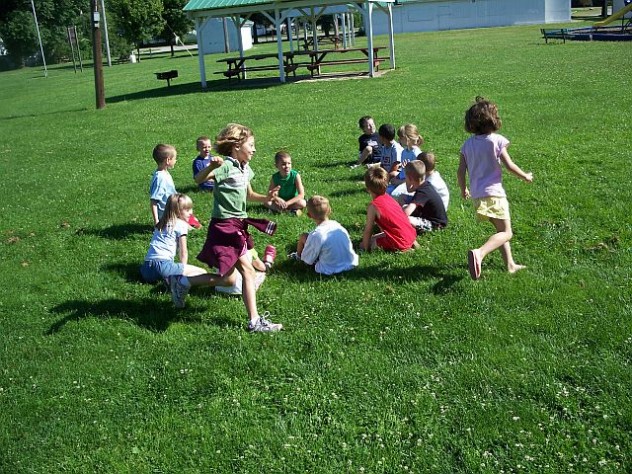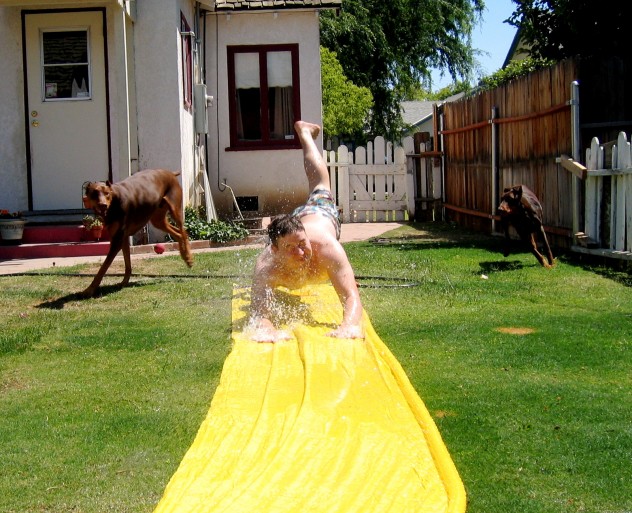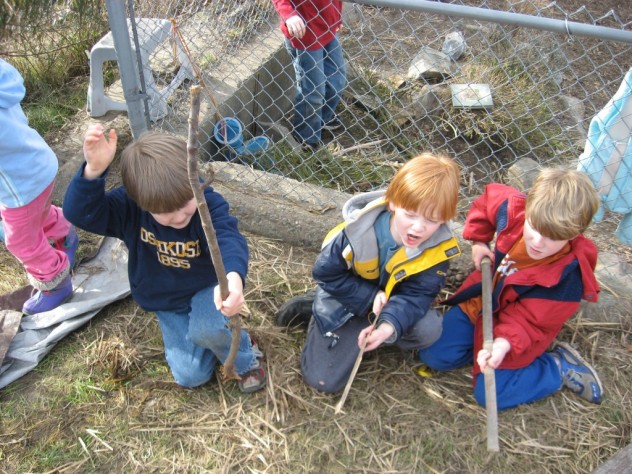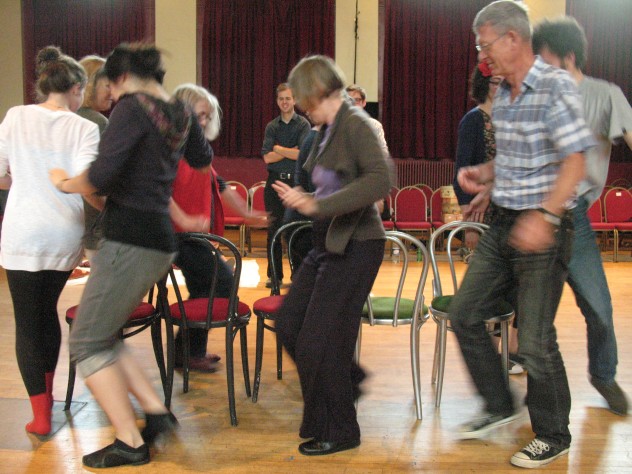 Weird Stuff
Weird Stuff  Weird Stuff
Weird Stuff  Mysteries
Mysteries 10 Tragic Disappearances and Deaths in Joshua Tree National Park
 History
History 10 Ways Childhood Really Sucked in the Old West
 Music
Music 10 Name Origins of Famous Bands from the 1990s
 Religion
Religion 10 Biggest Turnarounds by the Catholic Church
 Weird Stuff
Weird Stuff 10 Unbelievable Times Laws Had Unintended Consequences
 Humans
Humans Ten Historic Women Who Deserve Way More Credit Than They Got
 Movies and TV
Movies and TV 10 Films That Spawned Major Lawsuits
 History
History Ten Times Towns Were Wiped Off the Face of the Earth
 Creepy
Creepy 10 of the Most Disturbingly Haunted Public Houses in the UK
 Weird Stuff
Weird Stuff 10 Niche Subcultures That Are More Popular Than You Might Think
 Mysteries
Mysteries 10 Tragic Disappearances and Deaths in Joshua Tree National Park
 History
History 10 Ways Childhood Really Sucked in the Old West
Who's Behind Listverse?

Jamie Frater
Head Editor
Jamie founded Listverse due to an insatiable desire to share fascinating, obscure, and bizarre facts. He has been a guest speaker on numerous national radio and television stations and is a five time published author.
More About Us Music
Music 10 Name Origins of Famous Bands from the 1990s
 Religion
Religion 10 Biggest Turnarounds by the Catholic Church
 Weird Stuff
Weird Stuff 10 Unbelievable Times Laws Had Unintended Consequences
 Humans
Humans Ten Historic Women Who Deserve Way More Credit Than They Got
 Movies and TV
Movies and TV 10 Films That Spawned Major Lawsuits
 History
History Ten Times Towns Were Wiped Off the Face of the Earth
 Creepy
Creepy 10 of the Most Disturbingly Haunted Public Houses in the UK
10 Children’s Games You Won’t Believe Got Banned
These days, being a kid is less about exploring the world and making mistakes and more about following ridiculous rules and regulations. Ironically, these rules aren’t even coming from the children’s parents, but from the governing bodies that claim to be protecting youngsters.
Protect them from what? From being kids.
10 Duck, Duck, Goose

The war against this game is being waged on several fronts. A few years ago, an anonymous online petition sought to ban Duck, Duck, Goose because it is “a hazard to innocent children across the playgrounds of America.” To avoid the long list of injuries resulting from this game (broken noses, ankles, wrists, and necks) the petition said that children must be protected, and we should “erase the game of Duck, Duck, Goose off the dark underbelly of sinister children games.”
Not only is it violent, the petition further contends, but also exclusive—singling out the one designated as the goose (which is ridiculous). Being the goose was the most fun part, because you got to run around. It was way better than just sitting quietly while someone else controlled the game. And injuries? From running around in a circle and trying to avoid being tapped on the shoulder? Maybe the occasional scraped knee or scratched elbow—what used to be war wounds, badges of honor, when we were kids. Now we spend more time worrying about the risks and hazards of everything we do and forget the fun and frivolity—what should be the essence of childhood.
Fortunately, the anti-Duck, Duck, Goose petition has only acquired 10 signatures so far.
9 Tag

You won’t be hearing the phrase, “Tag, you’re it!” on playgrounds, schoolyards, or community centers much anymore. “Chasing games” are now being converted to “walking games” because running after others with the intent to lay hands on someone else is clearly a recipe for injury. So much for the “go run around outside” advice our parents used to give us. So much for the campaign to get kids off the couch, away from the TV and Xbox, so that they can be active and get some much-needed exercise. According to the Centers for Disease Control and Prevention, seven percent of American children ages six to eleven were obese in 1980. Now that number is close to 20 percent.
Nevertheless, elementary schools in Wyoming, Washington, South Carolina, Oregon, and other states have passed bans against fun-filled, obesity-fighting tag in the name of safety—because such games can lead to slapping, pushing, and hitting instead of just touching. One Boston Elementary school principal said that recess is “a time when accidents can happen.” Last I checked, accidents can occur anytime, anywhere. Even in a padded room, one can trip over one’s feet and fall.
8 Red Rover

What used to be ideal for a playground game, a summer camp icebreaker, or a class team-building exercise is now labeled a “dangerous contact sport” by some summer camps.
For Red Rover, no equipment is required. All you need is a stretch of field or grass and two chains of children facing each other, joined by their hands. Then you chant “red rover, red rover, send [insert child’s name] right over,” beckoning the other to send over a single teammate—who will then run with all his or her strength and speed toward the opponents’ line and try to break through the grip of two hand-holders. Sure, it might hurt a little to have someone smash into your wrists, but you can always opt to let go. It also challenges the runner to strategize by carefully choosing to run toward two players he or she knows will fail.
Does it deserve the label of a “dangerous contact sport”? According to Children’s Hospital at Stanford, California, more than 3.5 million children under age 14 get hurt each year playing contact sports, and the leading cause of death from a sports-related injury is a brain injury. Not surprisingly, I couldn’t find a single reported case of a child’s head injury from Red Rover.
7 Human Target Games

In March 2013, the New Hampshire School District banned “human target sports,” such as dodgeball. The dsitrict’s decision falls in line with the National Association for Sport and Physical Education—a nonprofit group that sets standards for K-12 school sports. They’ve concluded that it disapproves of dodgeball. Why? Apparently, throwing a soft, rubber ball at a human being—even in the spirit of fun and cooperation (teams working together to have their last player standing)—encourages bullying and the infliction of injury on others.
With this logic, there would be the need to ban a few other games on school grounds: football (surely, football players are not exempt from bullying teammates, and tackling is not done to inflict pleasure), soccer (we’ve heard plenty of soccer hazing/bullying stories and players aren’t banging their elbows, knees, and heads together to be nice), and basketball (same reasons as soccer) are all just as bad or worse.
A teacher at my children’s elementary school suggested that the kids throw colorful sponges at each other instead of balls. That way, no one would get hurt. The kids were not too keen on the idea and wanted to play dodgeball “the right way.” Minutes into the sponge-version of the game, someone got his eye poked with the corner of the sponge and was crying. Ironically, when the class played dodgeball the following week—with the real ball—everyone had a marvelous, injury-free time.
6 Slip ‘n Slide

This obnoxiously yellow runway of plastic was invented in 1961 by Wham-O. On a hot, summer day when kids will do almost anything to be in the water, this was the ideal backyard toy. And it was easy and convenient, too: all you needed was a large enough patch of grass, a bathing suit, and a hose. Sadly, because seven adults and a 13-year-old suffered neck injuries or paralysis after slipping and sliding, this toy was recalled in 1993. Apparently, the government determined that parents and children just were not capable of finding the right type of landscape to assemble their plastic slide (too hilly, too irregular) or they couldn’t assume the right position before sliding (too bent over, too head first). The government suggested that families instead seek their slipping and sliding pleasure at city and county water parks where professionals assemble and maintain the equipment.
According to RideAccidents.com, between 1977-1997, approximately 50 people were killed or seriously injured at United States water parks. In the $20-million Pump House Indoor Water Park in Vermont, there is an 18-meter (60-ft) free fall called La Chute. In 2012, an eight-year-old boy got stuck inside the slide, and no one noticed until after two other riders crashed into him at 40 mph, breaking one rider’s ankle and traumatizing the little boy. So much for trusting the professionals. When I was a kid, I was happy trusting my dad to set up the water slide, and I never once got hurt.
5 Stocking Stuffers

In the last two years, toys traditionally ideal for stuffing into Christmas stockings have been banned in Brussels, Belgium. They were deemed too dangerous by the Toy Safety Directive, a group which regulates all toys sold to children younger than 14. According to the Directive, toys containing magnets, like fishing games, are unsafe because the magnets could be swallowed. Musical instruments, such as whistles and recorders, are being pulled from shelves since they might break apart and small pieces could be swallowed. The party blowers that make noise and unfold upon blowing into them are now labeled a risk for those under 14 because tiny bits of the blower could possibly come off and result in choking.
The list of regulations even goes so far as to state that children under the age of eight are no longer permitted to blow up balloons unless they are being supervised. Will children now be carded before they start the inflation process? How is it that my brother and I survived, Christmas after Christmas, even though our stockings were packed with these deadly toys?
4 Snowball Fights

In January 2013, several municipalities in Belgium’s Flemish region attached a fine of 100 euros to the heinous crime of starting a snowball fight. Has Belgium unleashed a special police unit trained to spot suspicious snowball behavior? This activity has been determined to put kids’ health and safety at risk. In fact, one local official explained that throwing snowballs is like throwing stones.
Hmm. I think people react differently to being hit with a clump of snow (which is made of flakes of frozen water) than they do to being hit by a rock (which is made of rock). Could a snowball be classified as a deadly weapon? Wouldn’t that make Frosty the next Chuck Norris?
3 Cops and Robbers

In March 2013, school officials at Worcesters Primary School in North London banned any playground games that involve “imaginary weapons.” Of course, cowboys and Indians is included as well—not only for the weapons issue (guns and tomahawks) but because it makes children wonder why Indians are always the bad guys.
Who ever said the Indians had to be the villains? When I was a kid, everyone wanted to be the Indian—he was the coolest character. Part of childhood is exploration and discovery. It was exciting to take on the role of people we didn’t know much about and only saw in movies and textbooks. Sure, with cops and robbers the lines are more clearly drawn because being a robber is bad—but that, too, was a valuable lesson for us kids in that we, as cops, were standing up for good. We had principles and moral standards and, yes, we had our imaginary pistols to defend those principles.
Unfortunately, given the stringent zero-tolerance laws of today, where a five-year-old can be suspended from kindergarten for pointing his index finger like a gun at his friend, it makes sense (on an absurd level) to shun these role-playing games.
2 Superhero Games

On May 17, 2013, a Philadelphia, Pennsylvania preschool sent home a bizarre and disturbing letter to its parents. Part of the disturbing nature was linked to the misspellings of words throughout the writing, like “our” and “play,” but the true oddity was in the photo placed at the top of the letter: a picture of some iconic childhood idols, such as Wonder Woman, Superman, and Batman, with a thick red line through them and a decree that because the “imaginations of our preschool children are becoming dangerously overactive,” superhero play would no longer be permitted.
No more running around the playground with your arms out to your side and an imaginary cape fanning out behind you, pretending to be flying into the face of danger to combat an evil villain. No more make-believe gadgets like web-shooters or laser guns or superhuman strength. Why? Because kids might become too violent as they are “fighting crime” and hurt themselves or each other. What happened to kids having the caped and masked “good guys” to look up to? What can they pretend to be now? Even if they make up games where they are bunny rabbits and unicorns, they might get hurt jumping too high or impale themselves on the horn.
1 Musical Chairs

A 2002 Washington Times article urged schools to ban musical chairs from all functions. Why? Musical chairs has been blacklisted for an impressive array of reasons: it encourages exclusion (you don’t sit on a chair fast enough, you’re out), bullying (you might be teased for not playing well and getting out quickly), aggression (you are all fighting for a chair), and competition (you are trying desperately to win and beat everyone else to that last chair).
These are all ridiculous reasons. Sure, it may exclude, but so do most activities in a person’s life (only one guy gets the promotion or the scholarship or the leading role in the school play or the varsity spot on the wrestling team), and perhaps it is best to get a kid used to this reality early on. As for bullying, there will always be the potential for being bullied because bullies are everywhere. The way to stop bullying is not to stop the activity but to stop the bully. Take him or her out of the game. Problem solved.
And aggression is also just a part of life. In fact, being aggressive may be considered a positive quality. Passive people will never get a chair. They will be out first every time—and not simply in the game. Finally, the argument against competition is getting old. Competition is not inherently bad. Competition is healthy. It makes people want to be better, strive for something greater. I am a professor, and I know that the first thing I hear my students say when I pass back a graded assignment to them is “whatcha get?” to their peers. It is natural to want to be superior to others. It is not just what kids do, it is what human beings do.
Maureen Roe is a professor of English and Critical Thinking at Santiago Canyon College in Orange, California.








